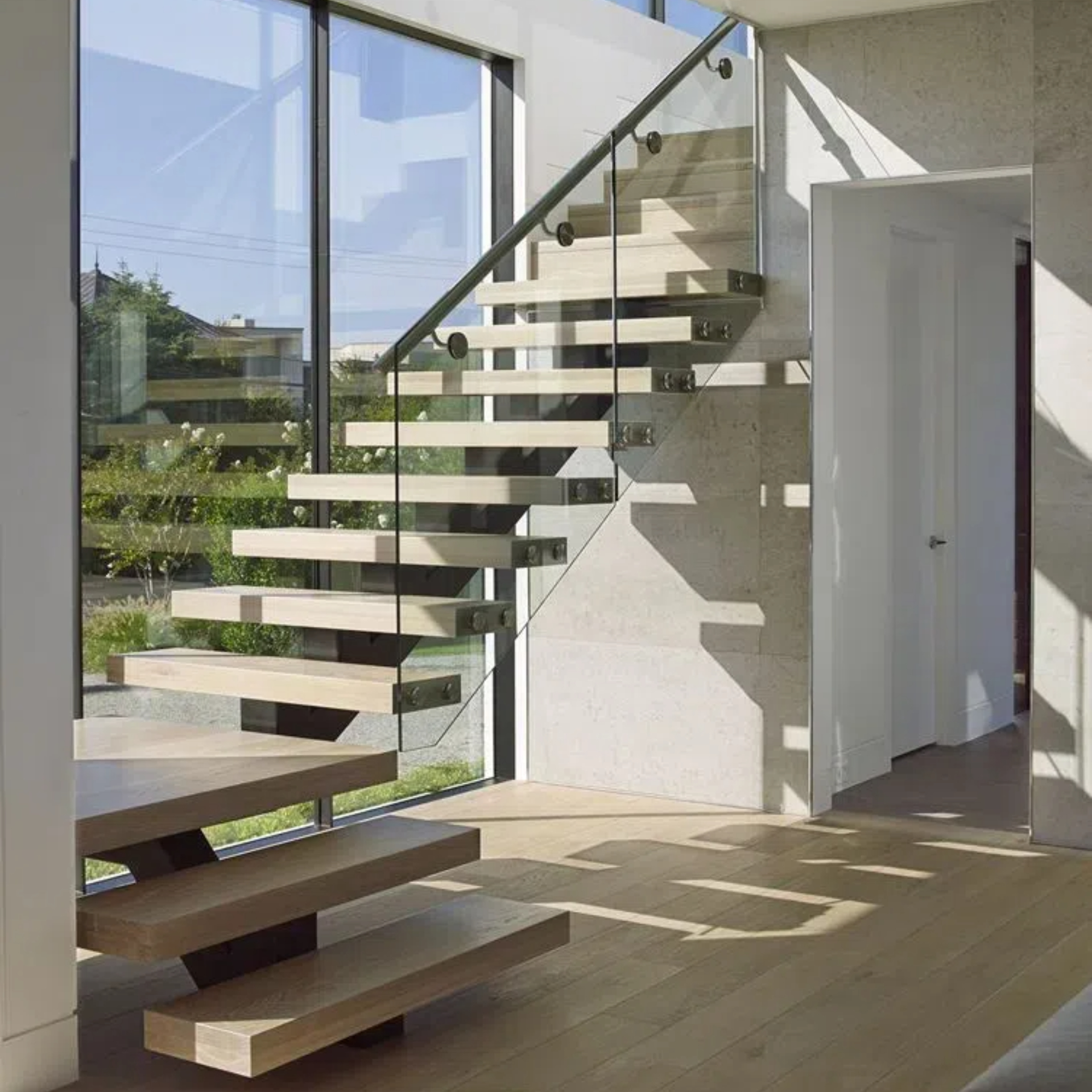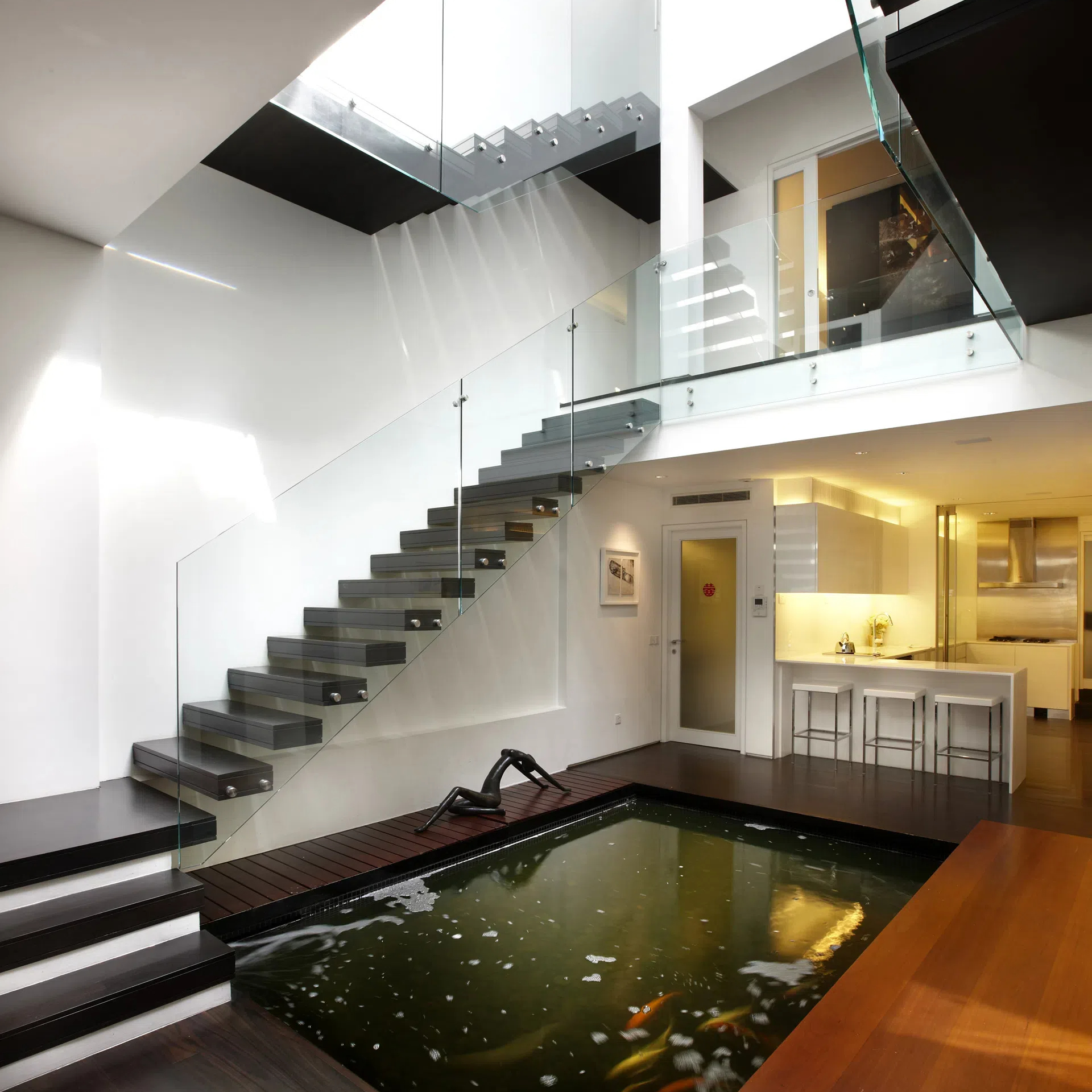Blending Steel and Wood: The Rise of Unique Staircase Designs
I. Introduction
In modern home design, steel-wood staircases are gradually emerging as the top choice for numerous residential and commercial spaces due to their unique charm and exceptional performance. This type of staircase design seamlessly blends the solidity of steel with the warmth of wood, visually presenting a simplistic yet elegant aesthetic that adds immense charm to the overall space.
The popularity of steel-wood staircases stems primarily from the advantages derived from their unique material combination. Steel, with its remarkable load-bearing capacity, corrosion resistance, and stability, provides a solid foundation for the staircase, ensuring safety and durability in use. The incorporation of wood, on the other hand, imparts a natural charm and a cozy tactile sensation, allowing individuals to experience the warmth and comfort of home as they traverse the stairs. This impeccable fusion of materials not only satisfies modern people's pursuit of quality living but also embodies designers' profound understanding of nature and humanity.
However, crafting a steel-wood staircase that is both aesthetically pleasing and practical, while adhering to safety standards, is no easy task. Customizing such staircases necessitates comprehensive consideration of multiple factors. From material selection to design planning, and from installation to post-maintenance, every step is crucial. Only through meticulous design and precise construction can one ensure that the staircase possesses not only an attractive appearance but also robust practical functions and outstanding safety performance.

II. Material Selection and Quality Control
Steel Selection
In the manufacturing of steel-wood staircases, the choice of steel material is a crucial first step. Different types of steel, such as stainless steel and carbon steel, each possess unique advantages and disadvantages, directly impacting the staircase's load-bearing capacity, corrosion resistance, and visual appearance.
Stainless Steel: Renowned for its exceptional corrosion resistance and aesthetic appeal, stainless steel can withstand prolonged use in humid or corrosive environments without damage. Its smooth surface is easy to clean and maintain, while imparting a modern and premium feel to the staircase. However, stainless steel tends to be more costly, and in some applications, it may appear overly cold and rigid, lacking warmth. Therefore, when selecting stainless steel, it is essential to consider the usage environment and budget comprehensively.
Carbon Steel: Known for its high strength and cost-effectiveness, carbon steel is a commonly used material in staircase construction. With proper treatment (such as galvanizing or painting), carbon steel can also achieve good corrosion resistance. However, compared to stainless steel, carbon steel may be more susceptible to corrosion in extreme environments, and its appearance may require higher maintenance costs. Consequently, when selecting carbon steel, special attention should be paid to its surface treatment process and subsequent maintenance plans.
To ensure steel quality, it is imperative to emphasize the importance of selecting high-quality steel. This requires us to carefully examine material certificates during procurement to ensure that the steel meets relevant standards and specifications. Additionally, partnering with reputable and well-established manufacturers is an effective way to safeguard steel quality. By visiting manufacturing facilities, understanding production processes, and assessing quality control procedures, we can further enhance our confidence in steel quality.
Wood Selection
Complementing steel, wood is an indispensable component of steel-wood staircases. A wide variety of wood types are commonly used in staircases, each with its own merits.
Solid Wood: Favored for its natural grain, warm touch, and good stability, solid wood offers a unique visual effect and texture. Different species of solid wood, such as oak and walnut, exhibit distinct visual characteristics. However, solid wood is sensitive to humidity changes, necessitating careful attention to moisture content and drying processes. Excessive moisture content or improper drying can lead to later deformation or cracking. Therefore, when selecting solid wood, focus on factors such as its origin, drying method, and moisture content.
Composite Wood: Known for its economy and stability, composite wood is made by bonding multiple layers of boards with glue. Its structure is stable and resistant to deformation. Additionally, its surface can mimic various solid wood grains, providing an attractive visual appearance. However, the environmental friendliness of composite wood may be influenced by the quality of the glue used, necessitating the selection of products that meet environmental standards.
Furthermore, observing the wood's natural grain pattern and surface smoothness can be effective methods for judging wood quality. During use, maintaining appropriate indoor humidity levels is crucial to prevent wood damage due to humidity changes.
III. Staircase Design
Style and Home Furnishing Coordination
When designing staircases, the primary consideration is achieving harmony and unity with the overall style of the home (such as modern minimalist, European classical, etc.). This not only concerns aesthetics but also reflects the residents' taste and lifestyle.
Modern Minimalist Style: If the home environment features simple lines, bright colors, and open spaces, the staircase design should adopt metallic or wooden materials with smooth lines and colors mainly in black, white, gray, or natural wood tones, avoiding excessive ornate decorations to maintain the space's transparency and freshness. The treads can be designed as flat plates with slightly beveled edges for both safety and aesthetics.
European Classical Style: For those pursuing grandeur and elegance in a European classical home, the staircase design should incorporate elements such as carvings, curves, and materials like marble, solid wood, or gold-plated decorations. The handrails can feature carved designs, and colors should lean towards warm tones or gold hues, creating a rich historical atmosphere and aristocratic charm. Additionally, small sculptures or murals can be placed at the staircase corners to enhance the artistic ambiance.
Personalized Design: Regardless of the style, personalized design is essential. We encourage our client to propose unique design requirements based on their preferences, living habits, or even emotional attachments. For instance, incorporating family crests, custom color schemes, or selecting materials with special meanings can make the staircase a one-of-a-kind attraction in the home.

Dimensions and Space Utilization
Accurate measurement of the staircase area's dimensions is fundamental to the design, directly affecting the staircase's practicality and aesthetics.
Precise Measurement: Detailed records of key data such as floor height, width, and corner angles are necessary, possibly utilizing professional measuring tools. These data serve as the basis for designing staircase height, tread count, handrail length, and other parameters.
Space Layout Planning: Based on the space's characteristics, plan the staircase shape to maximize space utilization. Straight staircases suit spacious layouts, offering simplicity and clarity. L-shaped or U-shaped staircases effectively utilize corner spaces, suitable for compact floor plans. Additionally, spiral staircases can save space while becoming a visual focal point. During planning, avoid conflicts with other functional areas (e.g., doorways, corridors) to ensure smooth passage.
Safety Performance
As a vital connection between floors in a home, the staircase's safety is paramount.
Compliance with Safety Standards: Staircase design must strictly adhere to national and local safety standards, for example, handrail heights no lower than 0.9 meters, ensuring comfort and safety during use.
Enhanced Safety Measures: Install anti-slip strips on tread surfaces, especially in humid environments, to prevent slipping. Furthermore, night lighting systems not only provide illumination at night but also enhance the staircase's decorative effect, adding warmth and security to the home. For homes with elderly or young children, consider adding additional handrails and non-slip rugs for further safety.
In summary, staircase design planning necessitates comprehensive consideration of style and home furnishing coordination, dimensions and space utilization, as well as safety performance. Through meticulous design and construction, a beautiful and practical staircase space can be created, adding immense convenience and comfort to daily life at home.
